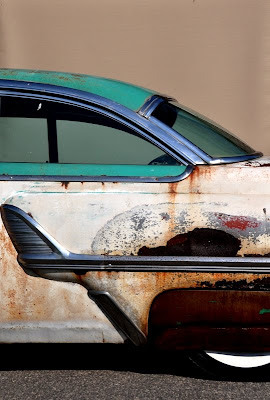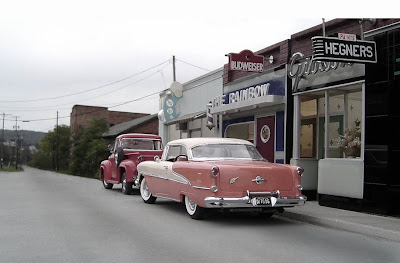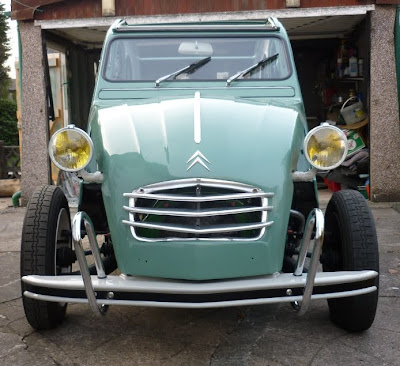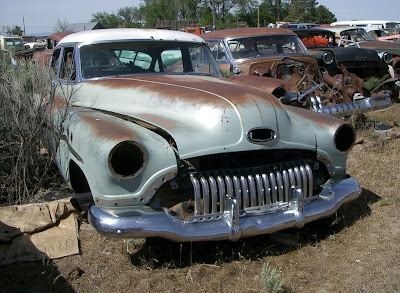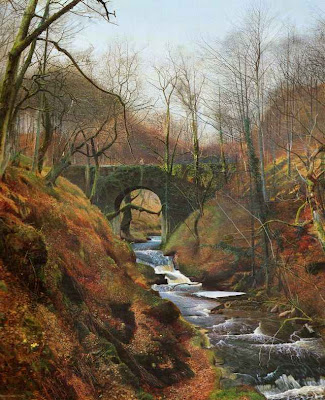
I often wonder why it is that I'm attracted to old things? Having thought about it I have come to the conclusion that I happened to be born in an era that was a turning point in Britain, where much of the old was swept away and replaced by the new.
During the 1960's we had what was known as the 'Slum clearances', where many of the old streets were demolished to be replaced by high rise concrete blocks. An unfortunate by product of this was that entire community's where shattered and dispersed, friends and long time neighbours separated and lost.
The new high rise blocks also had no human scale, no charm, or character. Just as with new automobiles they were manufactured cheaply, efficiently, and with an eye on the cost. As a child in the early 1960's I had shared the homes, streets, and sense of community that had been familiar to my father, and my fathers father before him, yet all of that was taken away.
In the painting above I have depicted a typical British 'slum' dwelling of the pre-1960's period. The term 'slum' is a derogatory term for poor housing, but many such houses were kept immaculately clean and tidy by the women of the house who were very house-proud.
The exterior gas pipes shown were often removed as electricity was installed in these housed by the 1940's, and even the old gas lamps were latterly converted to electric bulbs. The houses themselves were typically small, heated by coal fires, and had no interior bathroom, just an exterior toilet in the back yard.
To a child though they were a cosy haven, imparting a sense of stability and continuity that we just don't have any more, and I for one have many happy memories of such a home.
As with many of my paintings I have recreated a scene just as I remember it, which then asks of the viewer to decipher just what it is that is going on within it. Careful study of the painting would then reveal that there are some makeshift 'wickets' drawn in chalk on the wall, and there is a cricket ball on the ground telling us that a game of cricket was in previously progress. You can even see the marks on the wall that the hard cricket ball made when it hit, notice also that one mark is a little too high and wide.
One might then notice the small window in the corner is broken, and the score chalked up is thirteen...unlucky for some maybe? Well it was certainly unlucky for the boy that broke the window as he has been brought in by his mother and 'grounded' as punishment, which gave me the painting's title - "Not out!"




